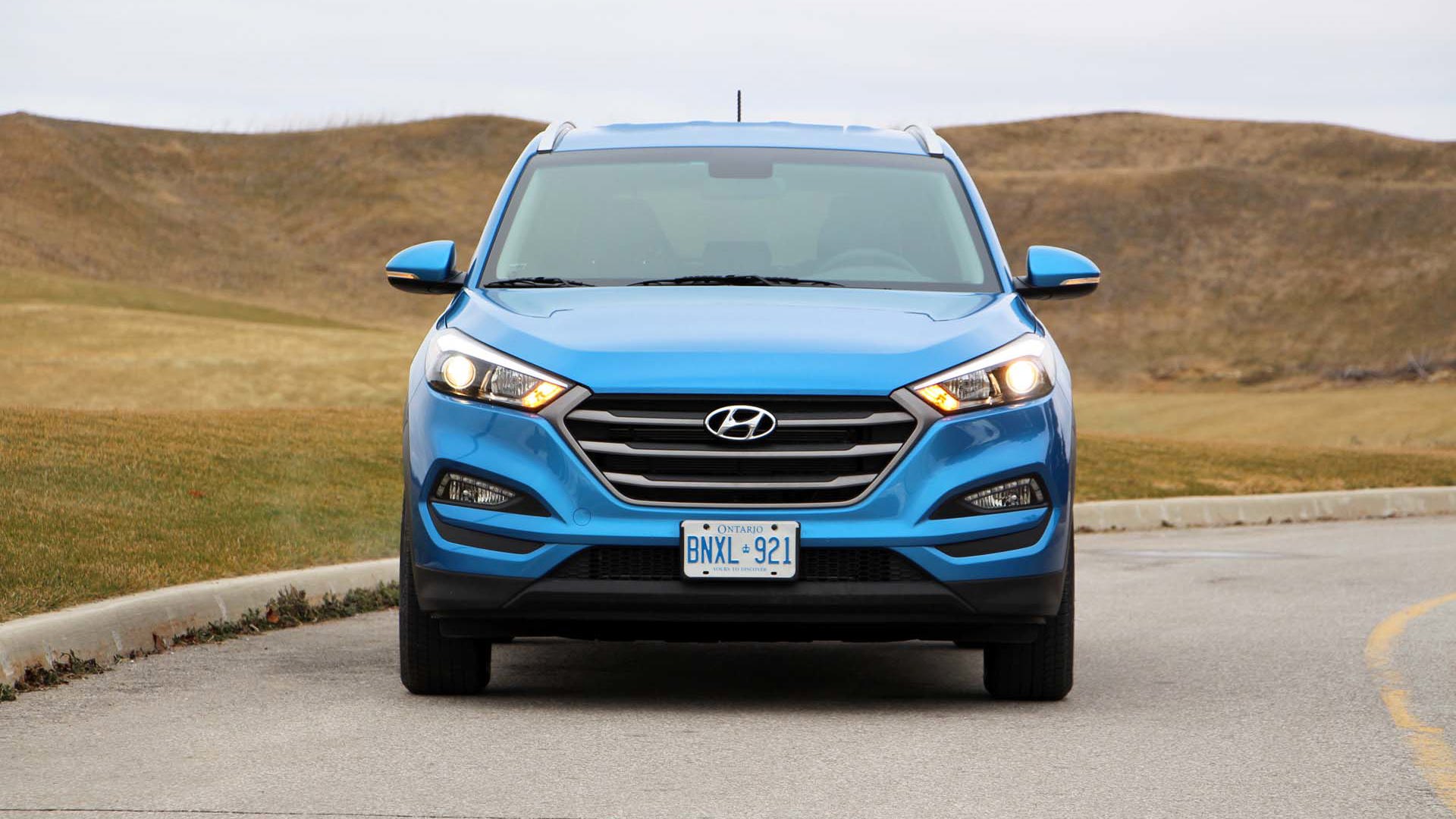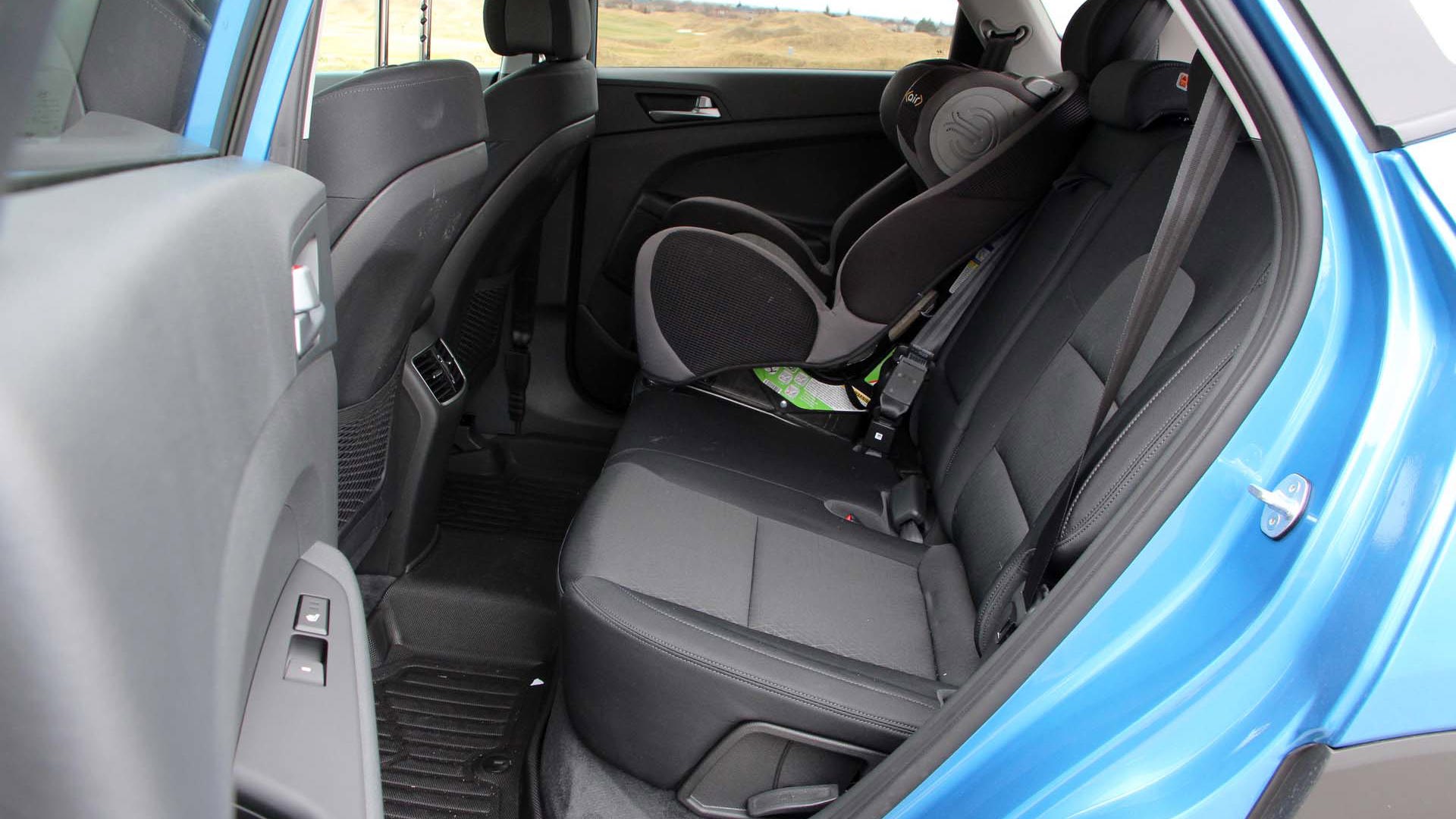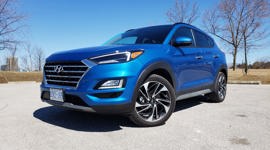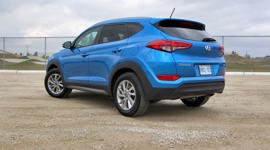The compact crossover segment is massive and intensely competitive, and every manufacturer puts forth a well-executed vehicle that will suit various lifestyles, from the rugged and off-road worthy Jeep Cherokee Trailhawk to the driver’s choice Mazda CX-5, and all the Escapes and CR-Vs and RAV4s and Foresters in between. You could draw names out of a hat and any of a dozen small SUVs would fulfill 99 percent of your needs if you regularly need room for four or five and some cargo.
What’s left to differentiate between these crossovers amounts to subtle strengths and subjective preferences and priorities: a quiet ride or performance punch; comfort or the latest tech features; cargo flexibility or passenger space. At the end of the day, it’s often the financing or incentive that will seal the deal, or just the right mix of features for the price, or perhaps it's love at first sight with a pretty grille.
Over these next few months, we will poke and prod and pick apart every inch of Hyundai’s new Tucson to see if it lives up to the challenge of your typical Canadian family.
And on that note, let me introduce the latest addition to autoTRADER.ca's long-term fleet: the completely redesigned Hyundai Tucson, which arrives for 2016 ready to take on this critical segment. Although not completely unknown, the Tucson has long played second fiddle to its larger Santa Fe sibling, the Tucson’s arrival mid-2015 drove it to its best sales year ever in Canada and the United States, followed by its best January ever, though it’s still a long way off from sales leaders like the Ford Escape, Honda CR-V and Toyota RAV4.
Over these next few months, we will poke and prod and pick apart every inch of Hyundai’s new Tucson to see if it lives up to the challenge of your typical Canadian family. We know it’s good, as it managed the best raw score in our comparison of smaller subcompact crossovers, but was priced well out of contention in that mini-ute segment, so we look forward to pitting it against its more natural competition.
But first, let’s take a look at the Tucson lineup and value, this last a traditional strong suit of the Hyundai brand.
The Tucson’s most basic trim is the Base FWD, and although lacking all-wheel drive, it’s still plenty of car for $23,499, each and every Tucson equipped with at least a 164-hp 2.0L four-cylinder and six-speed automatic transmission, as well as modern basics like A/C, power windows and locks, ABS disc brakes and Bluetooth. Delivery and destination is a $1,795 fee for any trim, and regional taxes will take that price up another tier. Standard features that stand out are the fog lights, auto headlights, heated seats and side mirrors, keyless entry, six-speaker sound with five-inch touchscreen display, back-up camera, 60/40 split folding rear seats with centre armrest and 17-inch wheels, albeit steelies for the base trim.
King of Compact SUV: Comparison Test: Compact Crossover SUVs - 2015
The next step in the Tucson lineup, the $26,699 Premium, adds somewhat random features: 17-inch alloys (replacing same-sized steel wheels), roof rack rails, heated rear seats, blind spot detection with rear cross-traffic alert and lane change assist.
Something like roof rails seems to me that it should be included even on the base model, while integrated turn signals in the wing mirrors, sun visor and glovebox illumination and the leather-wrapped steering wheel seem like frivolities that don’t seem to warrant that price hike, though hopefully Tucson customers will appreciate the advanced safety features at such a low trim. To get AWD, you need to spring for at least this Premium trim, then fork over an extra $2,300 to get the AWD badge and running gear, landing at $28,999. As we requested a popular trim by sales volume, this is the trim Hyundai provided to us, and despite being a more basic trim, the Tucson is striking in this Caribbean Blue and a slick design without any of the awkwardness or droopiness you find in so many SUVs these days.
Also available once you step up to the Premium AWD is the Tucson’s powertrain upgrade, a 1.6L turbo four-cylinder paired with a seven-speed dual-clutch transmission (DCT). The perky little turbo pumps out 175 hp, not that much better than the 2.0’s 165, but boosts torque to 195 lb-ft of torque, up 44 from 151 in the base Tucson engine, and available as early as 1,500 rpm for great responsiveness and punch. You’re looking at $31,549 plus fees for this combination, but for this price Hyundai throws in the heated steering wheel, 19-inch alloys , dual-zone auto climate, heated steering wheel (this is the one feature that Jacob will miss most, as his delicate Australian hands suffer mightily in our frigid Canadian winter) and eight-way power-adjustable driver's seat with adjustable lumbar support.
We drove a Tucson with the upgraded powertrain (and all the features of the fully loaded 1.6T Limited) for a week before hopping into the long-term Premium 2.0 AWD, so we will comment on the differences between those two powertrains in a later report, though it might not be as cut and dry as you’d expect.
Anyhow, back to our lineup, where there is one more trim available to those looking for feature content while happy to stay with a base power plant. The Luxury AWD makes a leap to $33,099, but it comes packing power leather seats, leather-wrapped instrument panel, eight-speaker premium audio, eight-inch touchscreen with nav, proximity keyless entry with push-button start, illuminated exterior front door handles, panoramic sunroof, proximity-activated power liftgate, auto-dimming rearview mirror with integrated HomeLink garage-door opener and the oh-so desirable shark fin antenna. Because everybody needs a shark fin antenna. Those whip antennas have no street cred.
The penultimate trim is the Limited AWD, which comes standard with the 1.6L tubo and seven-speed DCT and, as the name implies, all-wheel drive for $36,649, right where you’ll find the top trim CR-V Touring. At $36K, Hyundai treats you to power-adjustable passenger seat, "Supervision" gauge cluster with 4.2-inch LCD display, LED tail lights, HID headlights with adaptive cornering lights and rear park assist sensors. And premium door trim inserts. Your elbows will thank you.
The top dog in the Tucson pack is the Ultimate AWD at $39,599, where we find upgraded driver aids like Autonomous Emergency Braking system (AEB) and Lane Departure Warning System (LDWS), while ventilated front seats are a treat on hot summer days, LED headlights offer upgraded illumination at night and the exterior is dressed up in additional chrome bits.
While the Tucson has many of the requisite luxury items and is priced reasonably, even this pricier top trim is lacking a few items you’ll find on competitor’s models, like rain-sensing wipers, power tailgate, memory seats or adaptive cruise control.
Even if the feature list doesn’t blow away everyone in the segment, at least the Tucson’s growth spurt makes it more competitive sizewise, with length closer to key competitors, adding cargo space and legroom while losing headroom. Overall, it’s not as spacious as segment leaders, but it is hardly cramped.
First impressions are that this is a solid, attractive, well-rounded vehicle at the smaller end of the segment, with a quality interior that has been an easy vehicle to settle into. Although it’s not necessarily priced like a smaller SUV, in this basic trim with a long list of standard equipment, it’s an appealing value in this critical battleground for small SUV shoppers.
Pricing: 2016 Hyundai Tucson
Base Price (Base FWD): $24,399
Base Price (Premium AWD): $28,999
Options: None
Destination: $1,795
A/C Tax: $100
Price as tested: $30,894
Competitors:
Chevrolet Equinox
Ford Escape
GMC Terrain
Honda CR-V
Jeep Cherokee
Kia Sportage
Mazda CX-5
Mitsubishi Outlander
Nissan Rogue
Toyota RAV4
Subaru Forester
Volkswagen Tiguan
























